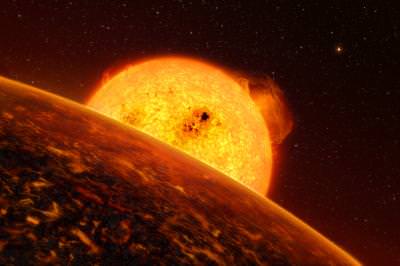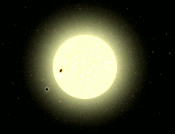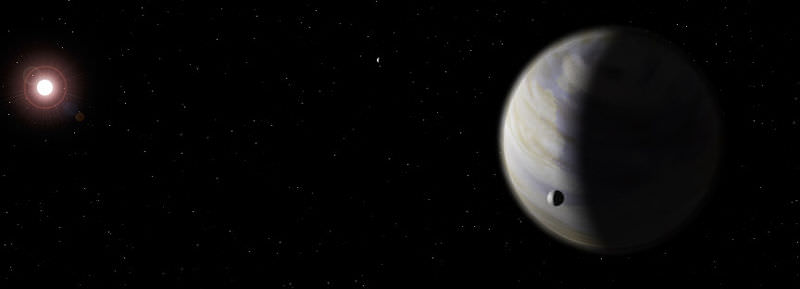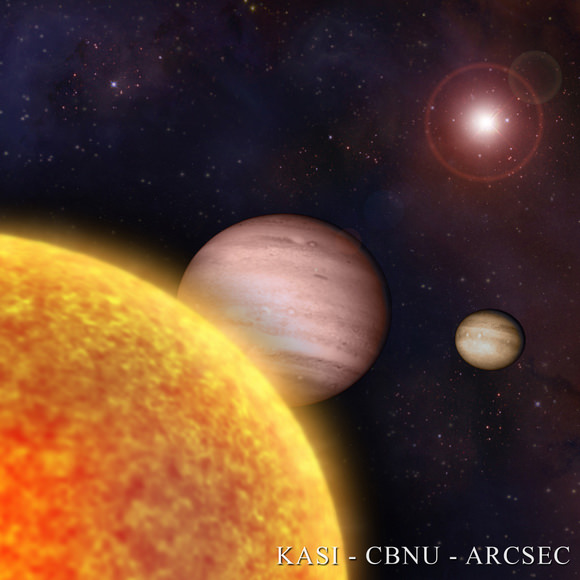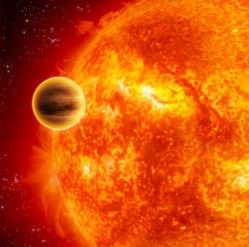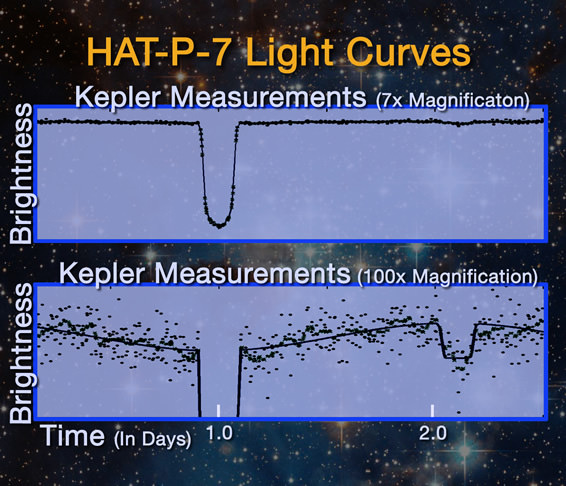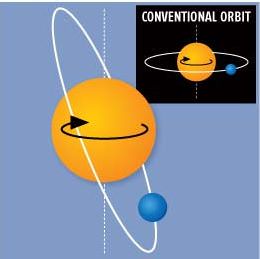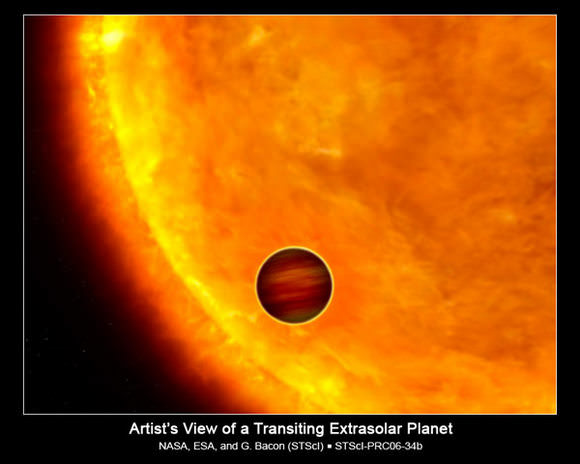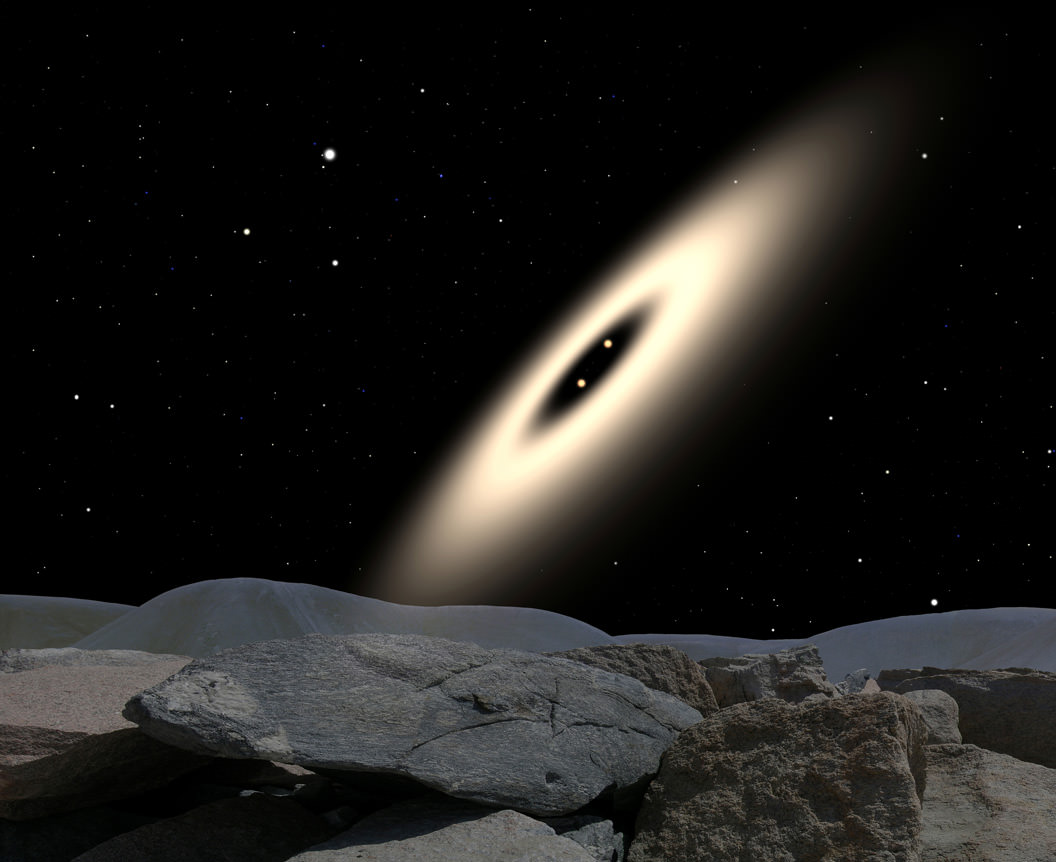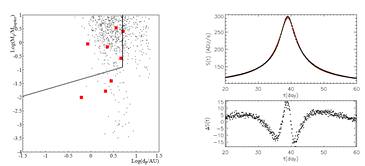[/caption]
If any creature lives on COROT-7b, the recently confirmed rocky exoplanet, they might think the sky is falling. This planet is close enough to its star that its “day-face” is hot enough to melt rock, and according to models by scientists at Washington University in St. Louis, COROT-7b’s atmosphere is made up of the ingredients of rocks and when “a front moves in,” pebbles condense out of the air and rain into lakes of molten lava below. Yikes!
This unusual rocky world was the first planet found orbiting the star COROT-7, an orange dwarf in the constellation Monoceros, or the Unicorn. COROT-7b is less than twice the size of Earth and only five times its mass. But this place is nothing like Earth.
“The only atmosphere this object has is produced from vapor arising from hot molten silicates in a lava lake or lava ocean,” said Bruce Fegley Jr., Ph.D., professor at Wash U, who created models of COROT-7b along with research assistant Laura Schaefer. Their paper appears in the Oct. 1 issue of The Astrophysical Journal.
This star-facing side has a temperature of about 2600 degrees Kelvin (4220 degrees Fahrenheit). That’s infernally hot—hot enough to vaporize rocks. The global average temperature of Earth’s surface, in contrast, is only about 288 degrees Kelvin (59 degrees Fahrenheit).
The side in perpetual shadow, on the other hand, is positively chilly at 50 degrees Kelvin (-369 degrees Fahrenheit).
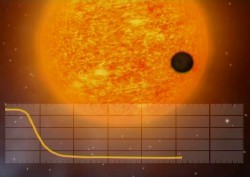
So, what might the planet’s atmosphere be like? To find out Schaefer and Fegley used thermochemical equilibrium calculations with a special computer program called MAGMA that was used to study high-temperature volcanism on Io, Jupiter’s innermost Galilean satellite.
Because the scientists didn’t know the exact composition of the planet, they ran the program with four different starting compositions. “We got essentially the same result in all four cases,” says Fegley.
Perhaps because they were cooked off, COROT-7b’s atmosphere has none of the volatile elements or compounds that make up Earth’s atmosphere, such as water, nitrogen and carbon dioxide.
“Sodium, potassium, silicon monoxide and then oxygen — either atomic or molecular oxygen — make up most of the atmosphere.” But there are also smaller amounts of the other elements found in silicate rock, such as magnesium, aluminum, calcium and iron.
Why is there oxygen on a dead planet, when it didn’t show up in Earth’s atmosphere until 2.4 billion years ago, when plants started to produce it?
“Oxygen is the most abundant element in rock,” says Fegley, “so when you vaporize rock what you end up doing is producing a lot of oxygen.”
The peculiar atmosphere has its own singular weather. “As you go higher the atmosphere gets cooler and eventually you get saturated with different types of ‘rock’ the way you get saturated with water in the atmosphere of Earth,” explains Fegley. “But instead of a water cloud forming and then raining water droplets, you get a ‘rock cloud’ forming and it starts raining out little pebbles of different types of rock.”
Even more strangely, the kind of rock condensing out of the cloud depends on the altitude. The atmosphere works the same way as fractionating columns, the tall knobby columns that make petrochemical plants recognizable from afar. In a fractionating column, crude oil is boiled and its components condense out on a series of trays, with the heaviest one (with the highest boiling point) sulking at the bottom, and the lightest (and most volatile) rising to the top.
Instead of condensing out hydrocarbons such as asphalt, petroleum jelly, kerosene and gasoline, the exoplanet’s atmosphere condenses out minerals such as enstatite, corundum, spinel, and wollastonite. In both cases the fractions fall out in order of boiling point.
The atmosphere of COROT-7b may not be breathable, but it is certainly amusing.
Source: Washington University

